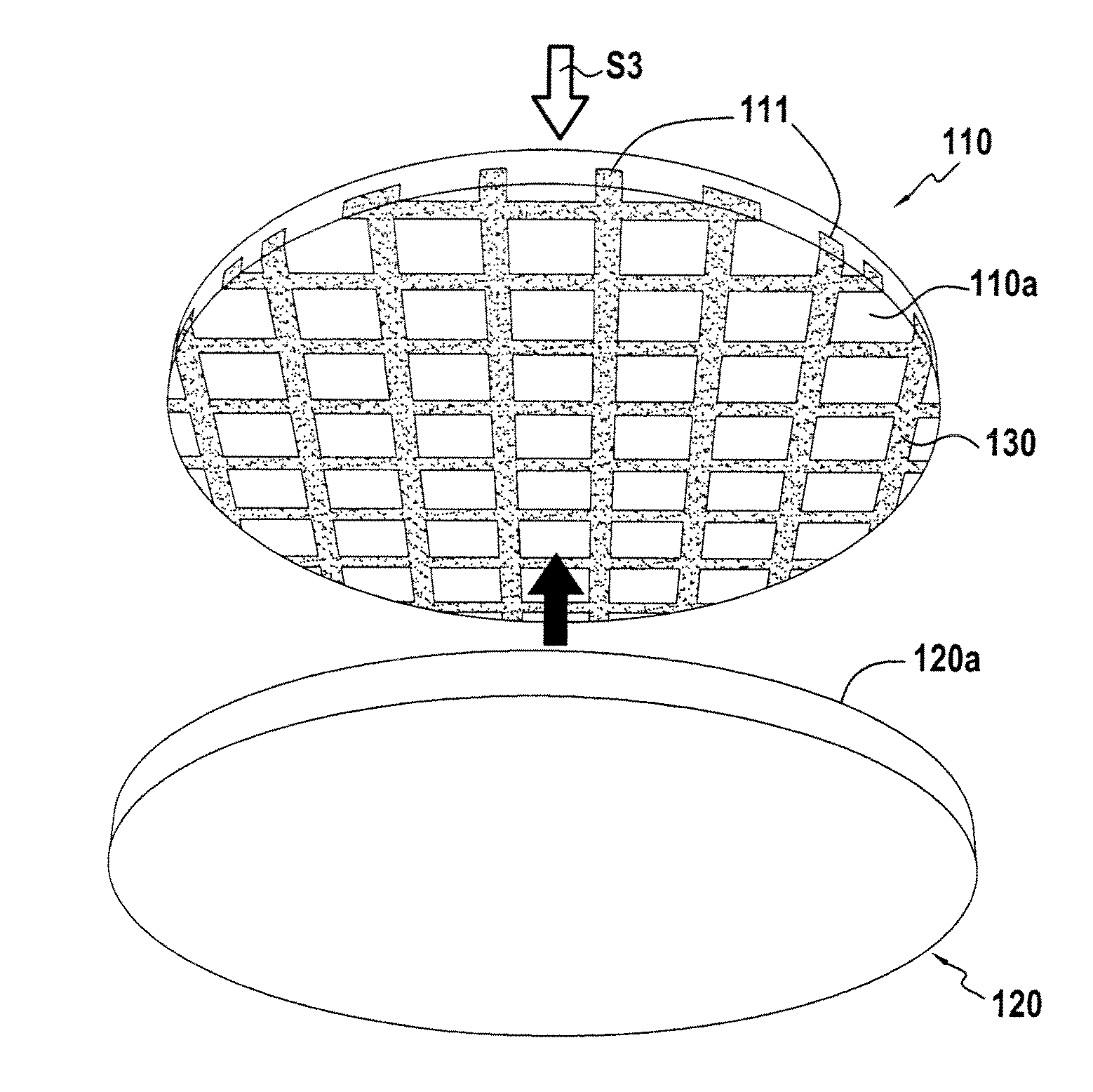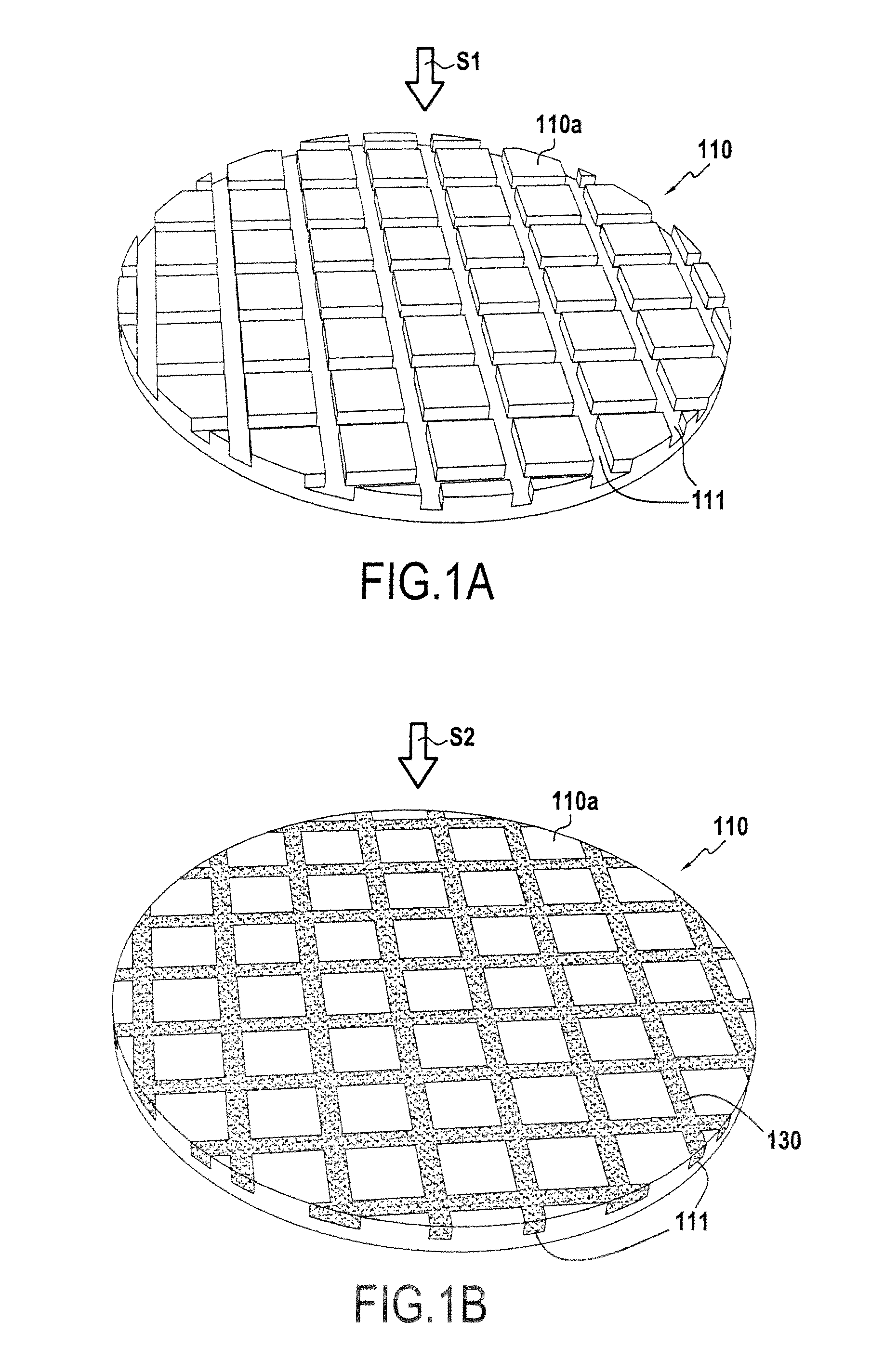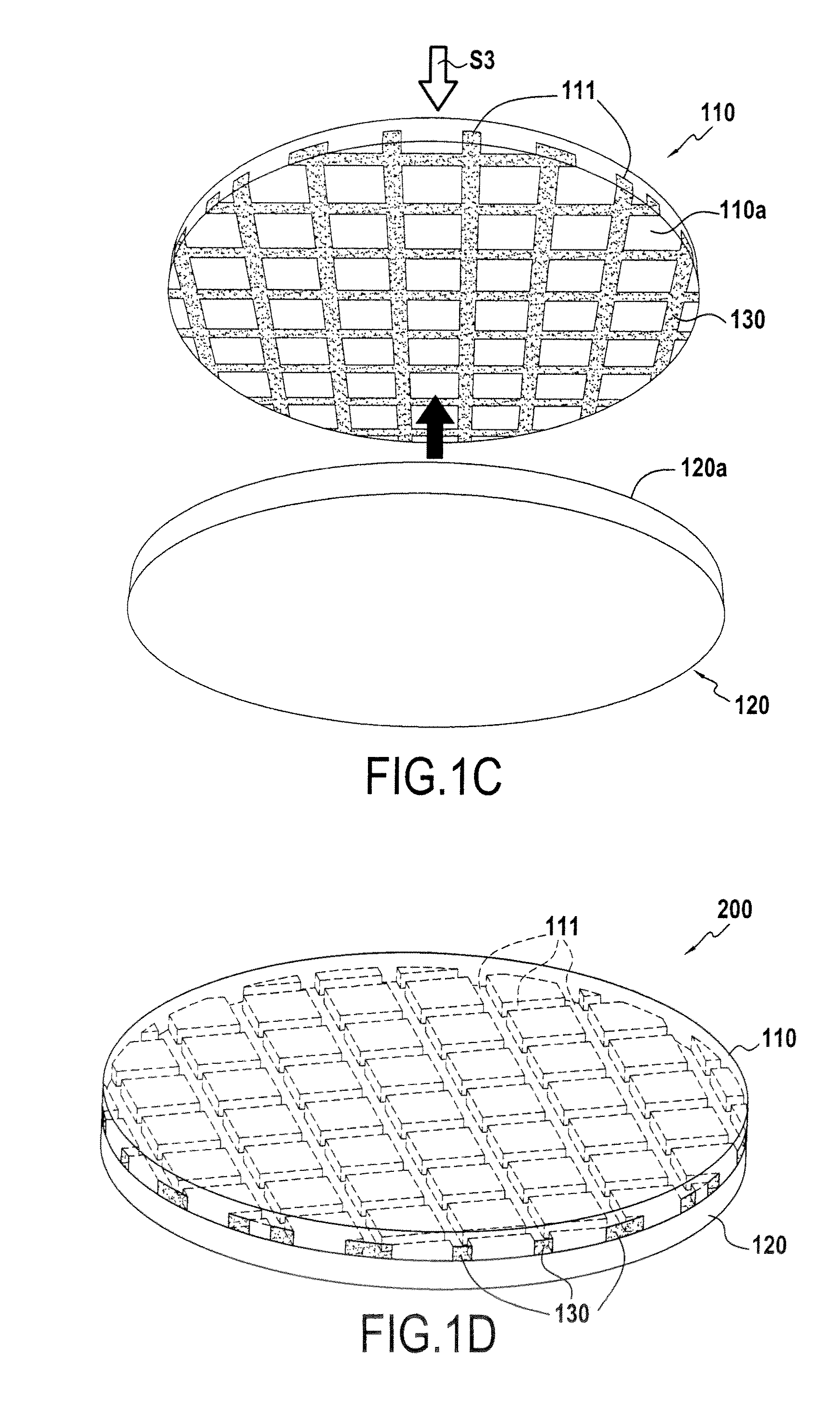Method of producing a heterostructure with local adaptation of the thermal expansion coefficient
a technology of thermal expansion coefficient and heterostructure, which is applied in the direction of semiconductor devices, semiconductor/solid-state device details, electrical devices, etc., can solve the problems of reducing the quality of the bond between the substrates, reducing the defectivity, and delamination or splitting of the substrates or layers, so as to reduce the strain and/or deformation
- Summary
- Abstract
- Description
- Claims
- Application Information
AI Technical Summary
Benefits of technology
Problems solved by technology
Method used
Image
Examples
Embodiment Construction
[0024]The method of the present invention is of general application to the production of heterostructures formed by assembling at least one first substrate with a second substrate, the substrates having different thermal expansion coefficients.
[0025]The method of the invention proposes producing trenches in at least one of the two substrates to be assembled together, the trenches being produced in the bonding face of the substrate and being filled with a material that has a thermal expansion coefficient lying between those of the two substrates.
[0026]Each substrate may be constituted by a mono-layered structure (a single material) that may include motifs and / or components, or a multi-layered structure (stack of layers of different materials). With a multi-layered structure, it is the thermal expansion coefficient of the material of the layer that is closest to the bonding interface that is taken into account in selecting the thermal expansion coefficient of the material filling the ...
PUM
| Property | Measurement | Unit |
|---|---|---|
| temperature | aaaaa | aaaaa |
| temperature | aaaaa | aaaaa |
| diameters | aaaaa | aaaaa |
Abstract
Description
Claims
Application Information
 Login to View More
Login to View More - R&D
- Intellectual Property
- Life Sciences
- Materials
- Tech Scout
- Unparalleled Data Quality
- Higher Quality Content
- 60% Fewer Hallucinations
Browse by: Latest US Patents, China's latest patents, Technical Efficacy Thesaurus, Application Domain, Technology Topic, Popular Technical Reports.
© 2025 PatSnap. All rights reserved.Legal|Privacy policy|Modern Slavery Act Transparency Statement|Sitemap|About US| Contact US: help@patsnap.com



